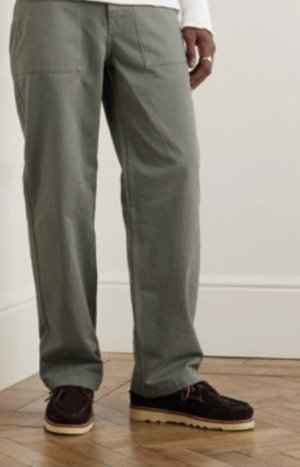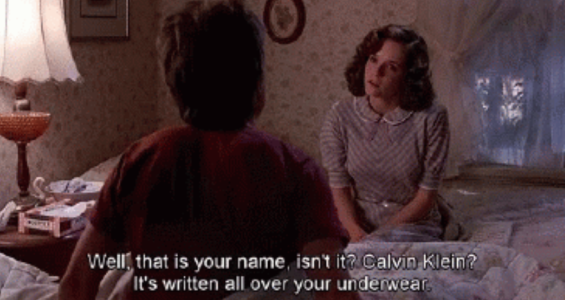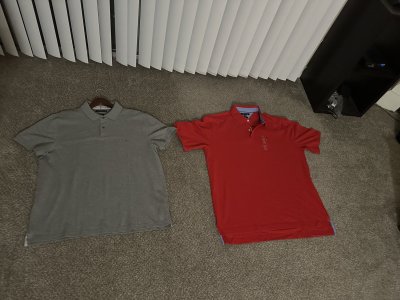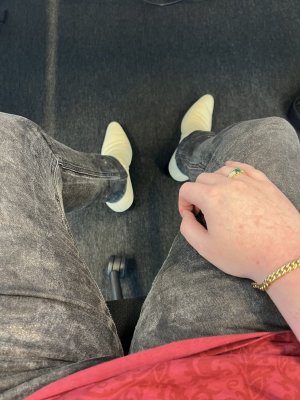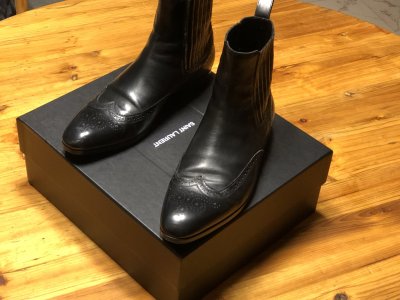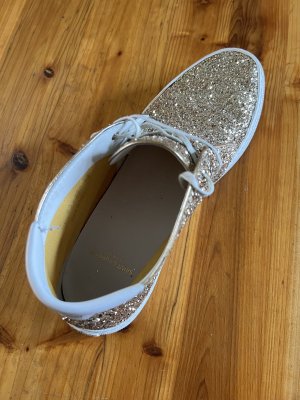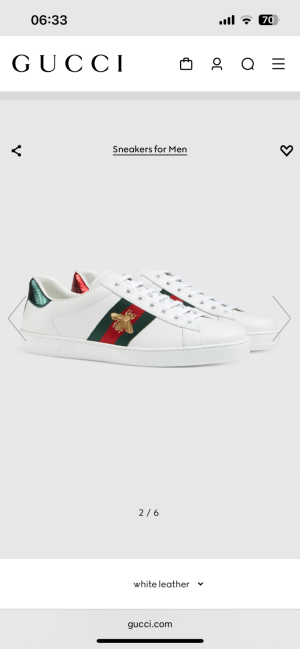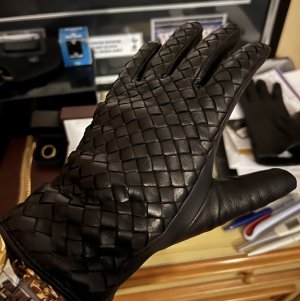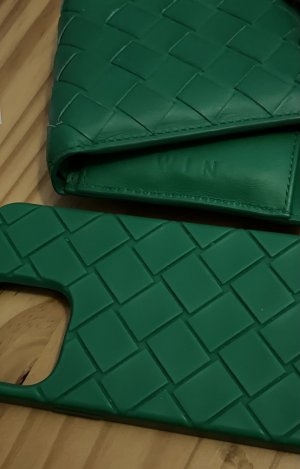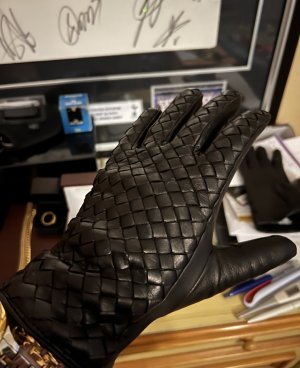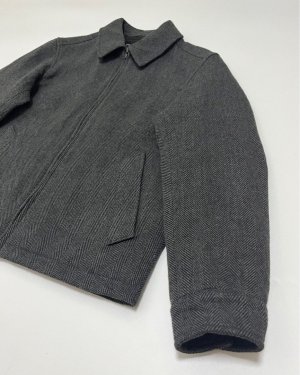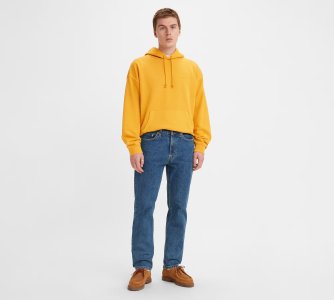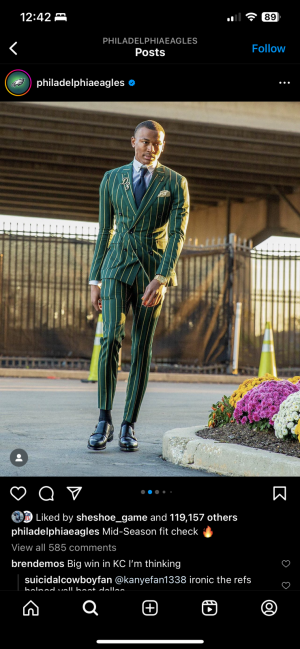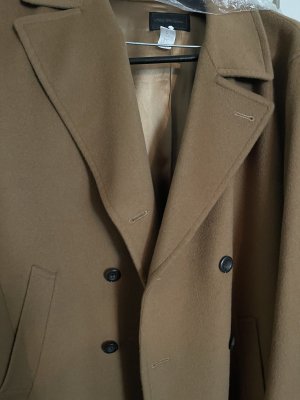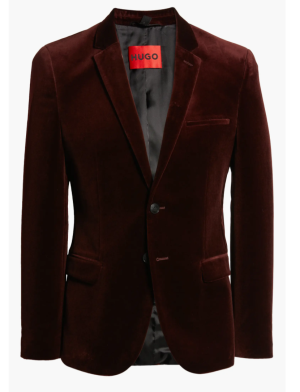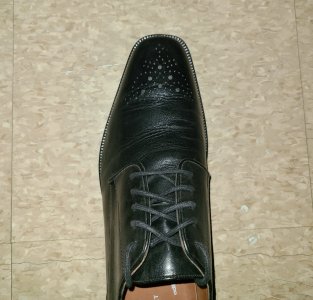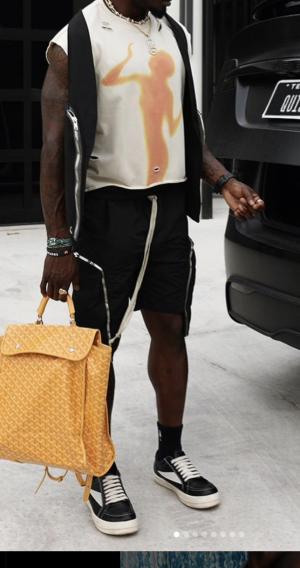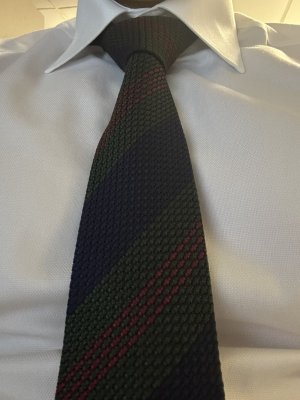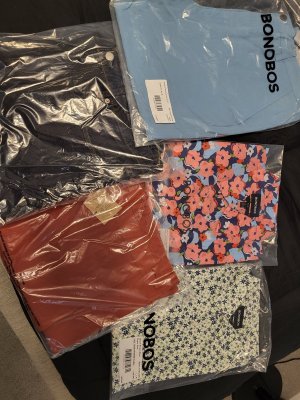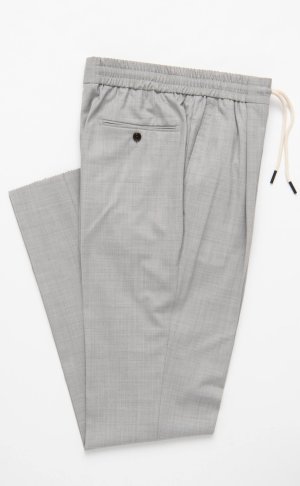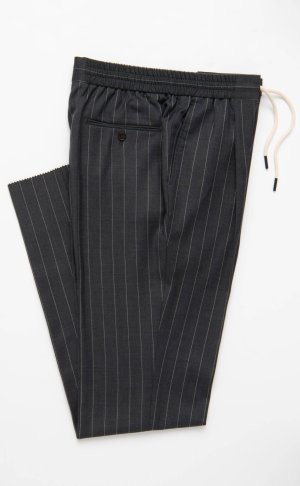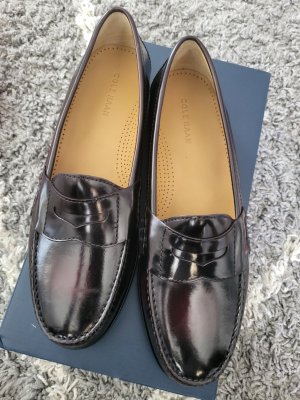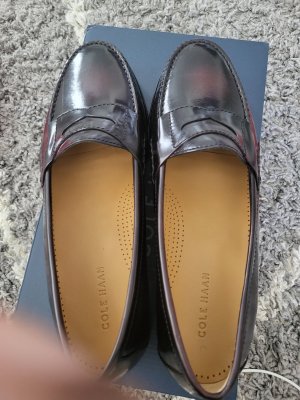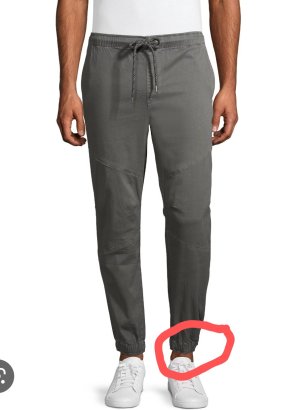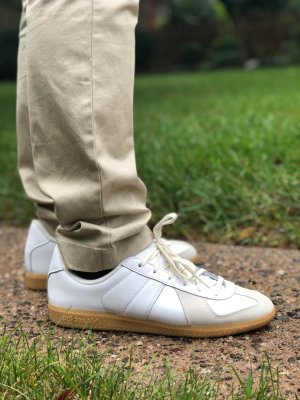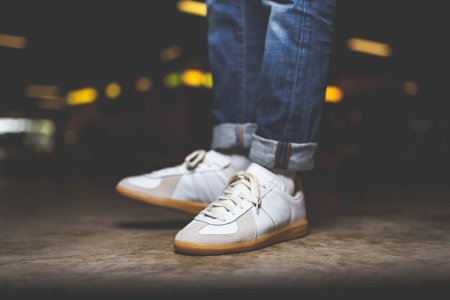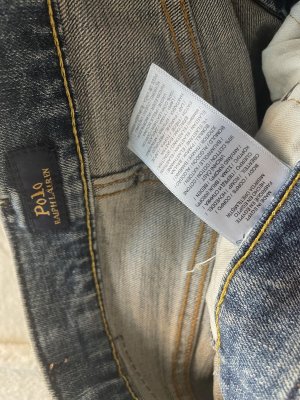The Sneaker Comes of Age
When Christopher Tennant, the editor of the magazine Man of the World, met up with his future in-laws a few months ago at JoJo, an Upper East Side restaurant, he wore a navy blazer from Barneys New York, olive slacks and — what else? — a pair of sneakers by Common Projects.
“I always wear sneakers,” he said.
When Jian DeLeon, the deputy style editor at Complex magazine, went to the ballet last month, he paired a plaid suit with white sneakers by the Amsterdam brand ETQ, which he said feel “just as luxe as a pair of oxfords, and are 10 times more comfortable.”
And when Tyler Thoreson, the head of men’s editorial for Gilt Groupe, appeared recently on NBC’s “Today” to talk fashion, he wore a custom blue suit, a white dress shirt and navy blue sneakers, also by Common Projects. His wardrobe has become so sneaker-centric, he said, that “when I put a suit on, I have to think twice: ‘Oh, maybe I’ll mix it up and throw on my wingtips today.’ ”
The once ungentlemanly sneaker, it seems, has undergone a fashion baptism. The distinction between dress and athletic shoes is on the verge of collapse for fashion-forward men, as the humble gym shoe has outgrown its youth-culture/streetwear origins to become a fashion accessory, as well as a staple on runways, red carpets and in the workplace, where it is no longer considered the height of quirk to wear them with a suit.
The boundaries of acceptability in casual footwear are shifting so quickly that Cary Grant himself, if he were to rise from the dead, would hardly look out of place with a pair of Adidas Stan Smiths poking from the cuffs of his glen-check Kilgour suit.
“At some point in the last two years, all the guys being photographed by The Sartorialist and Tommy Ton went from wearing Alden boots and double monk-strap shoes to Nike Roshes and retro New Balances,” said Brad Bennett, who runs the men’s style blog Well Spent. “It was almost as though some decree had been handed down by New York City’s fashion elite.”
Valerie Steele, the director and chief curator of the Fashion Institute of Technology museum, sees a cultural shift in how men dress, as when the hat-resistant John F. Kennedy inspired a generation to lose the fedoras.
“The fact that such a large percentage of men have made a determined effort to make sneakers their primary footwear, or even their only footwear choice is really comparable to men giving up hats in the ’60s,” Ms. Steele said.
The rise of sneakerdom is perhaps most obvious in the modern American office, where sneakers are not just acceptable but, in some places, de rigueur. This is particularly true in creative and web-based industries, where sneakers are part of the modern man’s uniform.
“You have guys like Jack Dorsey, guys like myself, that are in their mid-30s that are running companies,” said Jon Buscemi of the fashion label Buscemi, referring to the Twitter co-founder. “I don’t want to wear a pair of uncomfortable shoes by Alden or John Lobb all day.”
Continue reading the main story
With their historic ties to teen culture and hip-hop, sneakers connote youth and, in the context of the workplace, they are a swashbuckling statement that says: “I’m the new breed. I’m nimble afoot. I’m ready for revolution.”
The late Steve Jobs was no fashion plate, but he did help set the tone in the late ’90s when he mounted his “Think Different” revolt in New Balance running shoes. Most sneaker-clad professionals, however, take care to bump it up a notch in style from Mr. Jobs or Mark Zuckerberg, who can get away with avowedly normcore running shoes and jeans for about 28 billion reasons. It is not a look anyone can pull off, which is the allure for those who can.
“It’s like wearing a hat: you have to have the attitude,” said Ben Watts, the fashion photographer, who wears sneakers even to black-tie galas.
In a sense, it parallels the transformation of bluejeans in the 1970s, when the ranch-hand dungarees were reborn as designer jeans and became a status symbol for the disco elite. Increasingly, there are few places, outside maybe a Goldman Sachs boardroom, where you can’t get away with a well-chosen sneaker.
“A few years ago, if you walked into a certain kind of restaurant on the Upper East Side dressed like that and the maître d’ didn’t know you, he might seat you in the back,” said Dirk Standen, the editor in chief of Style.com. “That wouldn’t happen today.”
And as with designer jeans and most trends, the triumph of the fashion sneaker cannot easily be traced to a single source.
Some style watchers point to Europe, where over the last decade fashionable men adopted American sneaker culture and made it their own, pairing minimalist rubber-soled shoes with linen jackets, slacks and trim-cut suits for a sporty twist on cafe society elegance. Mr. Standen singles out Robert Rabensteiner, the stylist and fashion editor at L’Uomo Vogue, as one of the first to incorporate the haute sneaker look, which in turn influenced editors on both sides of the Atlantic.
Meanwhile, designers like Hedi Slimane and Raf Simons, who came of age in the era of sneakerhead culture, were rising to positions of power in the fashion industry and pushing the athletic shoe to new heights. Chris Kyvetos, the creative director of Sneakerboy, an upscale sneaker retailer based in Hong Kong, recalled the excitement when Mr. Slimane sent white hightop sneakers down the Dior Homme runway in Paris in 2004.
“As I stood and applauded with the rest of the audience, I remember thinking, ‘The rules have just been broken,’ ” he said.
Before long, even men who did not look to the runways for fashion inspiration could see that the sneaker was growing up.
In hip-hop circles, where sneaker worship long functioned as a secular religion, the athletic shoe was abandoning its scruffy streetwear connotations. Consider the $900 hightops by Maison Martin Margiela that Kanye West wore on his 2013 “Yeezus” tour. Or the sneakers worn by ASAP Rocky and Theophilus London in the front rows of New York Fashion Week.
Meanwhile, among whiskered Brooklynites, the heritage look of the mid-oughts spurred a revival for the classic court shoes of the ’60s and ’70s, like Adidas Rod Lavers and Tretorn Nylites, which paired well with dressy outfits. Taste-making retailers were quick to cash in on the retro sneaker chic. In 2010, for instance, J. Crew collaborated with New Balance on an all-suede version of the classic 1400 model that became an instant hit.
The trend accelerated in 2012, when Nike introduced its Flyknit sneakers, which were embraced by the fashion crowd for their head-turning colorways and 23rd-century design.
“Every other guy at Pitti,” the men’s wear trade show in Florence, “and in Milan and Paris was suddenly rocking orange-and-electric-blue Nike Flyknits with his summer suit,” Mr. Thoreson said. “The relative affordability of the look made it easy to replicate back home, and the influencer crowd seems to have found refuge by heading upmarket, trading their Nikes for labels like Saint Laurent and Lanvin.”
The point has not been lost on street-style photographers, including Bill Cunningham of The New York Times, who recently documented how “elaborately decorated sneakers are playing a starring role.” Earlier this year, The Cut blog declared that “from New York to London to Milan, the fashion set seemed to (almost) unanimously agree that the perfect winter shoes are simple sneakers.”
Certainly, the sneaker would not have gained its newfound respectability without a major push by the fashion industry. What started as a trickle of so-called “fashion sneakers” — including Prada’s America’s Cup sneaker in the ’90s — has turned into a torrent, said Tom Kalenderian, executive vice president for men’s wear at Barneys.
“It’s explosive, to put it in one word,” he said. “It’s happening from Converse to couture.”
Seemingly every design label has its statement sneaker now, including young New York upstarts like Public School and venerable European houses like Balenciaga. As a result, there’s a sneaker for every impulse, from $100 Converse fashion collaborations to the $990 handmade Italian hightops by Tom Ford. (There has been a parallel boom in women’s wear, as evidenced by the sneaker-heavy collections on display at the Dior and Chanel shows in Paris in February.)
As sneakers have hoisted their way toward the style pinnacle, it was probably inevitable that they would end up on the red carpet, where younger celebrities like Justin Bieber, Ne-Yo and Joe Jonas have been transforming the sneaker into the cool-kid version of the velvet slipper, pairing them with suits and even tuxedos with little irony or shock value.
Similarly, it is no longer unusual to see sneakers at elite fashion events like the Metropolitan Museum of Art’s costume gala and the Council of Fashion Designers of America awards show.
Were the wearers doing so because they were fashion influencers, or for a more elemental reason: They grew up wearing sneakers. It’s what they know.
“I’m 33, and like a lot of guys I grew up in the era of Air Jordans, the explosion of sneakers endorsed by our heroes,” said Will Welch, the style editor of GQ. “I remember me and my friends caring about who had what sneakers when we were 10, and that illogical relationship to sneakers has stuck.”
“Women have that relationship to purses,” he said. “Sneakers are our purses.”









